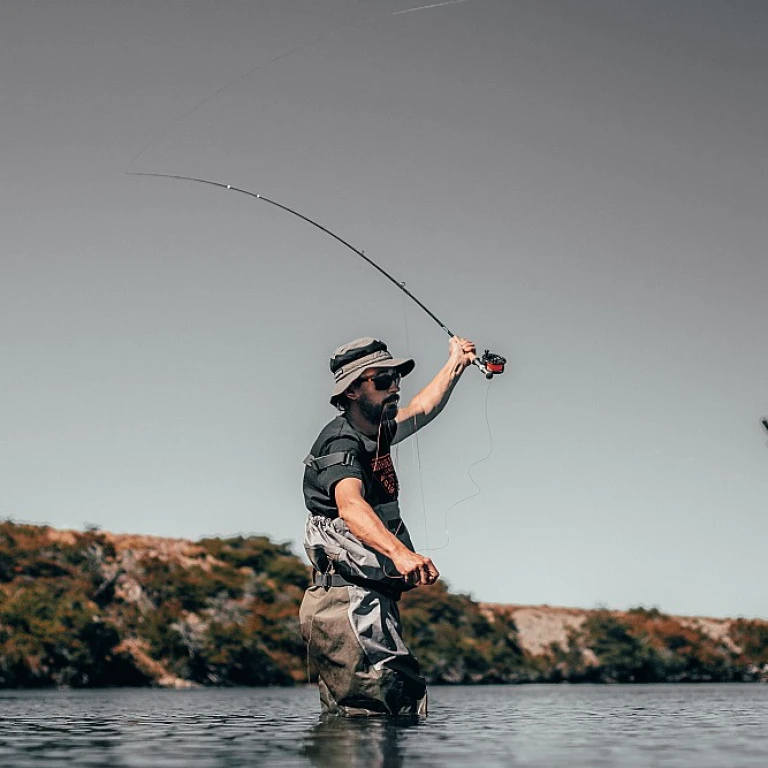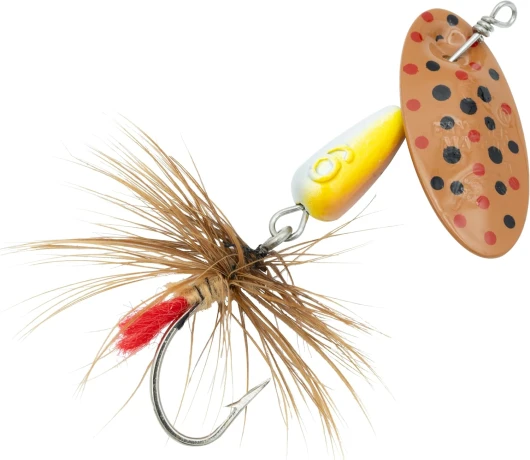Understanding Brook Trout Behavior
Unlocking the Secrets of Brook Trout Behavior
Brook trout, with their vibrant colors and elusive nature, captivate anglers across the globe. Understanding these beautiful fish is crucial for anyone looking to improve their success rate while trout fishing. Brook trout are primarily found in cold water environments, such as small streams and trout lakes, where they thrive in the water column's cool regions. Their habitats are mostly characterized by clean, oxygen-rich water, which provides the perfect environment for these sensitive fish.
Brook trout behavior can vary depending on the season, making it important for fishermen to adapt their strategies. During the spring and fall, brookies become more active and move through different levels of the water column in search of food. This makes them more susceptible to a well-presented lure, such as a rooster tail or a blue fox vibrax.
Brook trout are known to be opportunistic feeders. They prey on a variety of food sources, including small minnows, worms, and aquatic insects. Successful anglers will often choose smaller lures that mimic these natural foods to increase their chances of a catch. Techniques such as trolling in deeper lakes or casting near rocky bottoms can be particularly effective.
Of course, understanding the specific behavior of the brook trout in your chosen lake or stream is just part of the larger picture. For more insight into species like tarpon, which share some similarities in feeding patterns, you might find this
guide on the best lures for tarpon helpful as you expand your fishing adventures.
By gaining insights into the habits and tendencies of brook trout, anglers can make more informed decisions about the top lures and trout fishing techniques they employ, ensuring a more successful day on the water.
Top Lure Types for Brook Trout
Exploring Various Lures for Success
When targeting brook trout, anglers often debate which types of lures lead to the best catch rates. There are numerous options available, each with unique characteristics beneficial for different fishing scenarios. Let’s delve into some of the top lure types you might consider for enticing these elusive fish.
- Spinners: Spinners like the panther martin and rooster tail are popular choices among trout enthusiasts. Their rotating blades create vibrations and flashes in the water, mimicking small fish or insects. Spinners work exceptionally well in small streams where brook trout are frequently found.
- Spoons: These lures are designed to wobble back and forth, mimicking a distressed baitfish. A small white spoon is a great option when you’re trolling deeper water columns in trout lakes. Lake trout and rainbow trout might also show a keen interest in these flashy pieces of metal.
- Crankbaits: Crankbaits imitate prey such as minnows and small fish, making them an effective choice. Different sizes suit variable water depths, allowing adjustment based on whether the fish are holding close to the bottom or mid-level in lakes and streams.
- Soft Plastics: Soft plastic worms or minnows can be excellent, especially when fishing clear water. Their lifelike movements prove irresistible to hungry brook trout. Consider using these when angling in waters where fish are more accustomed to seeing live bait.
- Fly Lures: While not technically a traditional lure, fly lures deserve a mention. Anglers using a fly rod can achieve great success by matching local insect hatches or fishing imitations of small aquatic organisms.
Choosing the best lure involves understanding the water conditions and the behavior of the fish you're targeting. To learn more about lures for other fish varieties, you might visit
this guide for muskie anglers. Selecting the right top lures for brook trout will significantly improve your fishing experience and success.
Choosing the Right Color and Size
Mastering Color and Size Selection for Success
Choosing the right color and size for brook trout lures is a crucial step in achieving successful fishing outcomes. Brook trout, a species known for their vibrant colors and unique patterns, are often attracted to lures that mimic their natural food sources and environmental surroundings.
When selecting the ideal color, consider these factors:
- Natural Imitation: Opt for colors that match the natural prey of brook trout such as minnows and insects. Lures in shades of white, brown, and green often mimic these food sources.
- Water Clarity Consideration: In clear water, subtle colors like silver and gold spinner lures or silver-blue fox vibrax can mimic baitfish effectively. Meanwhile, lure colors like bright yellow or chartreuse can stand out in murky conditions.
- Reflective Surfaces: Using reflective lures like spoons can mimic the shimmering scales of a fish caught in sunlight, making them attractive to brook trout on sunny days.
When it comes to size, the principle is to match the hatch. Brook trout feed on a variety of small aquatic creatures. Here are some tips:
- Small and Subtle Lures: In smaller streams or clear lake water, brook trout are attracted to smaller-sized lures, akin to the size of their natural prey.
- Adjust for Bigger Fish: In trout lakes or when targeting lake trout, larger lures can be more effective.
- Flexibility with Trolling: If trolling in deep waters of a trout lake, consider larger lures that can reach the bottom and attract bigger trout.
Understanding the importance of color and size when selecting your brook trout fishing lure can make a significant difference in your success rate. The adaptability of the lure to mimic the aquatic environment will, without a doubt, increase the chances of a brook trout catch. Furthermore, exploring modern fishing techniques such as
closed soft shackles can enhance your fishing experience by offering more varied approaches.
Techniques for Using Brook Trout Lures
Mastering Lure Techniques for Brook Trout Success
When it comes to catching brook trout, the technique you apply with your lures can make a significant difference in your success rate. Understanding the nuances of lure presentation and movement can help you entice these tricky fish.
One effective method for using trout lures is to cast upstream and allow the current to naturally move your lure downstream. This approach closely mimics the movement of natural prey, appealing to the brook trout's instincts as they often face upstream in small streams or brooks. A technique particularly effective in cold water, where brook trout are more cautious and selective.
Consider using a variety of lures like spoons, spinners, and rooster tails. These lures are versatile, allowing you to vary the retrieval speed. A slow, steady retrieve can entice a curious brook trout to strike, while a fast retrieve may trigger a chase response. In deeper waters or trout lakes, bottom trolling can be effective, especially with lures like the fox vibrax or blue fox.
The depth of the water column is crucial to consider. Brook trout can often be found near the lake bottom in cooler temperatures. Implement a zig-zag retrieval pattern when using a spoon to create flashes of light that mimic small fish, this can help in drawing attention from brook trout lurking below.
Lastly, alternating between light and dark colors can be key, depending on the water clarity and weather conditions. In darker waters or when fishing at dawn or dusk, a brighter, more reflective lure can increase your chances of catching fish. Remember, consistent experimentation with lure techniques, sizes, and retrieves will identify what works best on any given day or season, helping you reel in the elusive brook trout.
Seasonal Considerations for Brook Trout Fishing
Adapting to the Seasons
Trout fishing can be influenced significantly by the changing seasons, affecting the behavior of brook trout as well as the effectiveness of your lures. Understanding how to adjust your tactics in different seasonal conditions will increase your chances of success. During the spring and fall months, when water temperatures are cooler, brook trout are more active and can be found in various parts of the water column. In these conditions, spinners like the Panther Martin or the Blue Fox Vibrax tend to attract the attention of these brookies due to their flashy, vibrant action.
In the heat of summer, when water levels drop and temperatures rise, focus on earlier mornings and late evenings for fishing. Look for brook trout in shaded areas or deeper parts of streams and lakes. Spoons and smaller lures that mimic minnows or worms, like the Rooster Tail, can be particularly effective in enticing fish dwelling near the bottom of lakes or tucked away in small streams.
When winter sets in, the challenges increase as brook trout slow down to conserve energy. Cold water requires a more patient approach, using lures that can remain visible and enticing despite the frigid conditions. A well-chosen lake trout lure, such as those with white or bright colors that contrast with the winter surroundings, often proves to be effective. Whether you're trolling in a trout lake or casting in cold, moving waters, adapting your tackle and technique to the season is key to keeping your fishing lines tight and your spirits high.
Common Mistakes and How to Avoid Them
Sidestepping Common Errors for Optimal Brook Trout Fishing
When it comes to brook trout fishing, even seasoned anglers make missteps that can hinder their chances to catch the best trout. Here are some frequent mistakes and tips on avoiding them:
- Overlooking Water Depth: Anglers often ignore the water column when choosing their lures. Brook trout can be found at various depths, especially in spring and fall when water temperatures fluctuate. Adjust your lure depth by using weighted spinners or trolling techniques, particularly in deep trout lakes.
- Wrong Lure Choice: The wrong lure type can reduce your success rate. Stick to proven brook trout lures like Panther Martin spinners, Rooster Tail spinners, and Blue Fox Vibrax. These lures work well in small streams and larger bodies like lakes.
- Ignoring Color and Size: Don't underestimate the importance of selecting the right lure color and size. Lure visibility can be affected by water clarity and light conditions. A small, brightly colored spinner may work best in clear conditions, while a darker spoon might be effective in murky water.
- Improper Lure Presentation: Presentation is key in making your lure look natural to brook trout. Avoid constant retrieval speeds; vary your presentation with pauses to mimic injured minnows or worms, enticing more strikes.
- Neglecting Seasonal Adjustments: Pay attention to seasonal patterns of brook trout behavior. In colder water, trout tend to move slower, so a slower retrieval technique may be more effective. Conversely, warmer temperatures might require faster presentations.
By being mindful of these aspects, you'll significantly improve your chances of successfully catching brook trout without revisiting previous errors. Keep these pointers in mind next time you're out on the water targeting these elusive fish.


